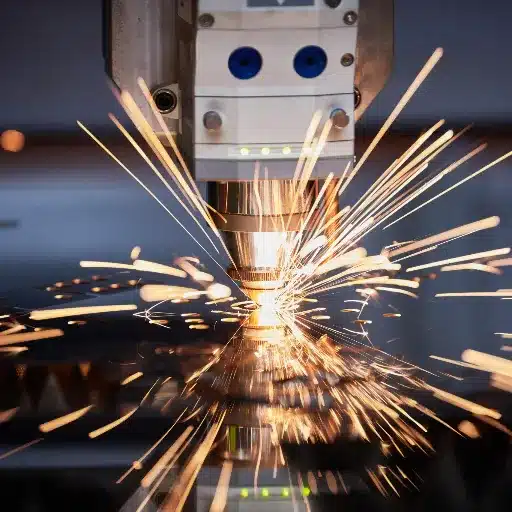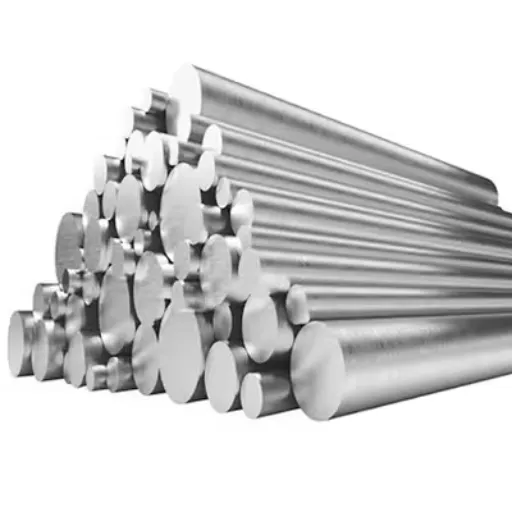Stainless steel captures attention for its usefulness due to its strength, resistance to wear and tear, and durability. However, not all steel is the same. The two commonly used types, grade 304 and grade 409, differ from each other in unique ways. Understanding these differences is fundamental for choosing materials for industrial constructions, automobile parts, home appliances, etc. This blog post aims to clarify the confusion around choosing between type 304 and type 409 stainless steel by explaining the key differences, including their strengths and weaknesses. With the information provided in this post, you can easily pick the right materials tailored to your needs.
What are the Key Mechanical Properties of 304 and 409 Stainless Steel?

- Strength: Offers high tensile strength and outstanding durability, making them highly resistant to wear and tear.
- Corrosion Resistance: Grade 304 has good resistance to rust and corrosion attacks in severe environments.
- Ductility: High ductility means that it can be formed into different shapes without cracking.
- Temperature Tolerance: Performs well in both high and low temperatures.
Stainless Steel 409
- Strength: Provides moderate tensile strength but less durability than grade 304.
- Corrosion Resistance: Moderate resistance to rust and corrosion is beneficial in less demanding environments.
- Ductility: Lower ductility makes it less useful in more complex applications than 304.
- Temperature Tolerance: Performs well under moderate heat but is not ideal for extremely high-temperature scenarios.
These characteristics mark the differences between the two materials and make choosing the most suited for your application easier.
How Does 304 Stainless Steel Compare in Strength?
When looking at 304 stainless steel and allocating it a grade with other types of stainless steel, one of its main strengths is its well-balanced mechanical properties. Its tensile strength reaches approximately 515 MPa or 75,000 psi, while its yield strength reaches around 205 MPa or 30,000 psi. These two give it a base structural and industrial appeal. However, 304 grade also offers ductility, which allows the steel to withstand deformation without breaking or shattering.
304 stainless steel demonstrates excellent toughness and stands up well to both low and high temperatures, broadening the range of environments for which it is suitable. While 304 typically exhibits similar strength characteristics to 316 stainless steel grade, it has slightly lower corrosion resistance. Its strength, versatility, and cost-effectiveness lead to its widespread use in construction, automotive, and food processing industries.
What are the Mechanical Properties of 409 Stainless Steel?
409 stainless steel is a ferritic stainless steel type that is durable, cost-efficient, and has good corrosion resistance. Here are five of its mechanical properties:
- Tensile Strength: 409 stainless steel has a moderate tensile strength for structural applications, around 380 MPa (55 ksi).
- Yield Strength: 409 stainless steel can withstand moderate loads before yielding, which ensures its yield strength of 205 MPa (30 ksi).
- Hardness: 409 stainless steel offers good resistance to wear and surface deformation due to Brinell Hardness (HB) of 125-180.
- Elongation: The percent elongation at rupture is around 20%. This gives it moderate ductility, formability, and increased pliability while under stress until breaking.
- Density: 409 stainless steel is relatively lightweight for a material with 7.75 g/cm³ density.
These particular properties, along with its corrosion resistance and economical affordability, make 409 stainless steel a good candidate for exhaust systems, heat exchangers, and other places used in the automobile industry.
Which Grade Offers Better Corrosion Resistance?
| Parameter | 304 Stainless Steel | 409 Stainless Steel |
|---|---|---|
| Chromium Content | 18-20% | 10.5-11.75% |
| Nickel Content | 8-10% | 0.5% |
| Corrosion Resistance | High, resists rust in most environments | Moderate, prone to surface rust |
| Magnetic Properties | Non-magnetic (except welded areas) | Magnetic |
| Heat Resistance | Excellent, withstands high temperatures | Good, but less than 304 |
| Durability | Long-lasting, over 10 years in mild climates | 8-10 years in moderate climates |
| Cost | Higher | Lower |
| Applications | Food-grade, decorative, exhaust systems | Automotive exhaust systems, structural use |
Why is 409 Stainless Steel Commonly Used for Exhaust Systems?
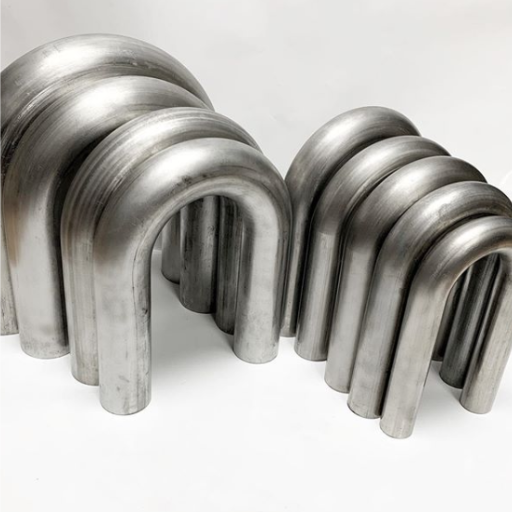
409 stainless steel is widely utilized in exhaust systems due to its exceptional durability, cost-effectiveness, and resistance to high temperatures. It presents moderate corrosion resistance that is more than adequate to withstand the environment of exhaust systems, including heat and fluctuating moisture levels. Furthermore, its lightweight and easy fabrication make it ideal for automotive manufacturers focused on performance. These factors, coupled with its affordability, make 409 stainless steel popular for this specific application.
What Makes 409 Stainless Steel Suitable for Automotive Exhaust Systems?
409 stainless steel is handy for automotive exhaust systems because of its specific properties. Below are the five key attributes that contribute to its suitability:
- High Heat Resistance
While other alloys may succumb to damage because of high heat, 409 stainless steel can withstand prolonged exposure to high temperatures, making it ideal for exhaust systems.
- Corrosion Resistance
409 stainless ensures durability and long-lasting performance due to its ability to withstand oxidation and corrosion in environments with varying moisture and chemical exposure.
- Lightweight Material
Being relatively lightweight compared to other alloys allows manufacturers to reduce overall weight and improve vehicle efficiency.
- Cost-Effectiveness
Unlike many other grades of stainless steel, 409 stainless is relatively cheap, providing an economical solution for the mass production of vehicles.
- Ease of Fabrication
The material is easy to form, bend, and weld, which makes it highly efficient for manufacturing complex components for modern exhaust designs.
How Does It Compare to Aluminized Steel and Mild Steel?
| Parameter | 409 Stainless Steel | Aluminized Steel | Mild Steel |
|---|---|---|---|
| Corrosion Resistance | Moderate, surface rust only | Good, coating protects from rust | Poor, prone to rust |
| Durability | Long-lasting, up to 10 years | Moderate, depends on coating integrity | Short, rusts quickly |
| Heat Resistance | High, withstands automotive heat | Moderate | Low |
| Cost | Higher than aluminized and mild steel | Affordable | Cheapest |
| Magnetic Properties | Magnetic | Magnetic | Magnetic |
| Applications | Automotive exhaust systems | Budget exhaust systems | Temporary or low-cost repairs |
| Rust Behavior | Surface rust, no deep penetration | Rust if coating is scratched | Rusts from inside and outside |
| Appearance Over Time | Turns brown, may pit | Maintains look unless coating damaged | Dull, rusts visibly |
Does 304 Stainless Steel Show Better Resistance to Rust?
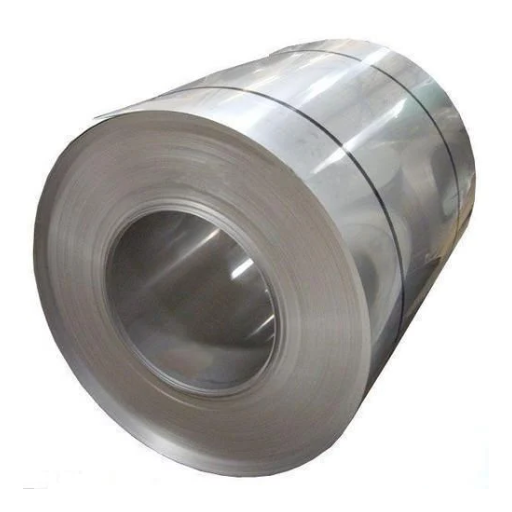
Yes, 304 stainless steel is more resistant to rust than 409 stainless steel. This is attributed to the higher amounts of chromium and nickel in 304 stainless steel. It is beneficial when it is subjected to moisture, chemicals, or salt, making it best in areas needing long-term durability and prevention of rust. However, it is also more costly than 409 stainless steel.
How Does 304 Prevent Surface Rust?
304 stainless steel prevents surface rust by forming a passive chromium oxide layer that protects against corrosion, moisture, and other harmful substances, guarding the metal beneath.
Why Is 304 Stainless Steel Less Prone to Corrosion?
304 stainless steel does not corrode as easily because of its unique structure and chemical makeup. Here are five reasons why it is more resistant to corrosion:
- High Chromium Content
304 stainless steel has about 18-20% chromium. This chromium content is enough to react with oxygen and form a protective chromium oxide layer or passivates layer that restricts moisture ingress and other harmful chemicals at the steel’s surface.
- Addition of Nickel
With a nickel content of 8-10.5%, 304 stainless steel is more stable and can withstand acidic and basic conditions. Nickel makes the steel resist harsh environments without succumbing to chemical attack.
- Low Carbon Composition
The carbon content in 304 stainless steel is kept below 0.08%, reducing carbide formation during welding or at elevated temperatures. This aids in preserving the chromium oxide layer that forms on corrosion-resistant steels and reduces the chances of localized corrosion, like pitting or intergranular corrosion.
- Resistance to Oxidizing Environments
Due to its passive film, 304 stainless steel performs outstandingly in oxidizing environments. It withstands considerable exposure to many chemicals, including nitric acid, which makes it useful for laboratory and industrial applications.
- Applicable Over Varying Temperatures
Stainless steel 304 remains resistant to corrosion at both high and low temperatures. Its lack of damage to the protective corrosion layer from temperature changes is especially important in unpredictable and severely extreme environments.
These properties make stainless steel 304 an adaptable and highly durable for nearly any industry, including construction or food processing.
What are the Alloy Compositions of 304 vs 409 Stainless Steel?
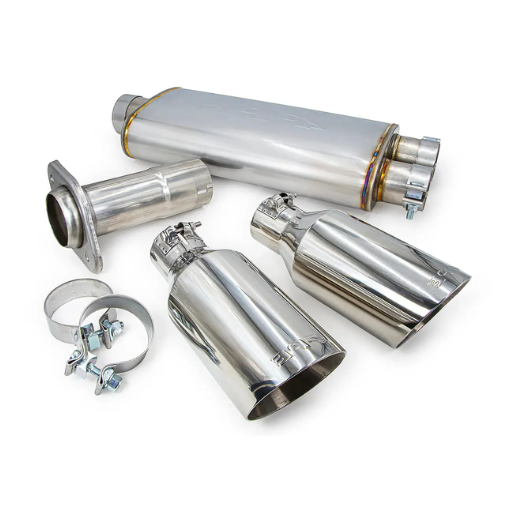
| Element | 304 Stainless Steel | 409 Stainless Steel |
|---|---|---|
| Chromium (Cr) | 18-20% | 10.5-11.75% |
| Nickel (Ni) | 8-10.5% | 0.5% |
| Iron (Fe) | Balance | Balance |
| Carbon (C) | ≤ 0.08% | ≤ 0.08% |
| Manganese (Mn) | ≤ 2.0% | ≤ 1.0% |
| Silicon (Si) | ≤ 1.0% | ≤ 1.0% |
| Phosphorus (P) | ≤ 0.045% | ≤ 0.045% |
| Sulfur (S) | ≤ 0.03% | ≤ 0.03% |
| Titanium (Ti) | Not present | ≤ 0.75% |
What Chromium and Nickel Contents are in 304?
304 stainless steel has a chromium content of between 18 and 20% and a nickel composition of 8 to 10.5%. These factors contribute to why 304 stainless steel has such incredible strength and corrosion resistance, making its use favorable for many optional applications.
How Does the Alloy Composition Affect 409 Stainless Steel?
| Element | Effect on 409 Stainless Steel |
|---|---|
| Chromium (Cr) | Form a corrosion-resistant passive layer |
| Titanium (Ti) | Stabilizes structure, improves weldability |
| Nickel (Ni) | Minimal, slightly enhances corrosion resistance |
| Carbon (C) | Low content prevents brittleness |
| Manganese (Mn) | Enhances strength and toughness |
| Silicon (Si) | Improves oxidation resistance |
| Phosphorus (P) | Minimal, can slightly reduce toughness |
| Sulfur (S) | Minimal, may affect machinability |
Can Both 304 and 409 Stainless Steels Be Welded Easily?
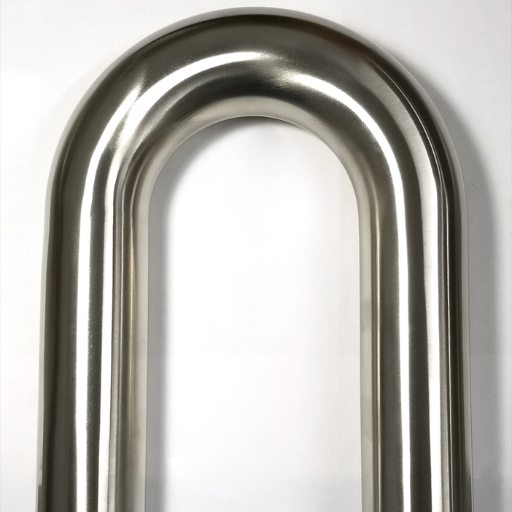
| Parameter | 304 Stainless Steel | 409 Stainless Steel |
|---|---|---|
| Weldability | Excellent, easy to weld | Good, but requires specific precautions |
| Filler Material | Type 308 or 309 recommended | Type 409 or 309 recommended |
| Preheating Required | Not required | Recommended for thicker sections |
| Post-Weld Treatment | Optional for maximum corrosion resistance | May improve ductility and reduce cracking |
| Heat Input Sensitivity | Low sensitivity | Requires controlled heat input |
| Cracking Risk | Low, with proper filler | Moderate, avoid oxygen contamination |
| Applications | Food-grade, decorative, industrial | Automotive exhaust systems |
What Are the Welding Techniques for 304?
Due to its wide acceptance in many industries and ease of welding, the 304 class of stainless steels is welded frequently. As a result, many processes can be used, like :
- Gas Tungsten Arc Welding ( GTAW or TIG Welding ) –
This is one of the most common procedures of welding 304 stainless steel due to the accurate heat control and high-quality welds it allows. It is ideal for welding thin sections of stainless steel and results in a clean surface with very little oxidation. Sometimes, argon or an argon-helium blend is also used as shielding gas.
- Gas Metal Arc Welding (GMAW or MIG Welding) –
MIG welding is appropriate for 304 steel welding when speed is prioritized over precision. Usually, a mixture of Carbon Dioxide and Argon is used as shielding gas to avoid contaminating the joint. When correctly set up, short-circuiting and spray transfer techniques can be used.
- Stick Welding & Shielded Metal Arc Welding (SMAW):
This method is ideal for fieldwork and other activities that require easy mobility. Welds of high strength can be achieved using electrodes specially made for 304 stainless steel under the SMAW process. Unfortunately, this method tends to have greater spatter and requires post-weld cleanup to meet acceptable standards.
- Laser Beam Welding (LBW):
Laser welding is another advanced method for highly specialized work. It has almost zero heat distortion and is very effective in welding thin-gauge stainless steel. This method is excellent in the automotive and aerospace industries.
- Resistance Welding:
This is well known for mass production and provides excellent quality in short cycle times without additional filler material. It is most frequently used for parts that are not too complex.
Important Considerations
- Considerations in Heat Management: Applying too much heat to 304 stainless steel will cause bending and warping, so the pre-heating step is usually unnecessary. Blunt cooling shall follow post-welding to manage stress.
- Use of Filler Material: ER308L filler rods or wires protect the base metal by sealing it off, preventing corrosion, and protecting its internal structure.
- Maintaining Corrosion Resistance: The layer of chromium oxide that forms after welding needs to be maintained. Along with other vital steps to clean the area, steps need to be taken to ensure cleaning and passivating the heat-affected zone (HAZ) to restore corrosion resistance.
- Latest Reports State that the most cost-efficient form of welding is done by either laser or TIG methods, as these two result in a uniform weld body with high penetration. Compared to other forms of welding, like SMAW, which falls below the 75% efficiency benchmark for cosmetic welds, TIG and Laser Welding break the 90% barrier.
304 stainless steel can be utilized in various industries and commercial sectors by selecting an appropriate and precise welding method.
Are There Specific Welding Methods for 409 Stainless Steel?
Automotive exhaust components are just one of the many applications where 409 stainless steel is prominently featured. Its special characteristics inherently require concerns and routing methods guaranteeing weld refinement, structural soundness, and distortion control. Here are five common strategies for welding 409 stainless steel.
- GTAW (Gas Tungsten Arc Welding)
- Details: Argon shielding gas, for instance, has a very low chance of contamination, which makes pure argon shielding gas ideal for providing high-quality argon welds for 409 stainless steel strip.
- Data: The average penetration rate for argon welds in 409 stamped stainless steel is 85%, and an 85% rate is also achieved for contamination-free weld penetration.
- GMAW (Gas Metal Arc Welding)
- Details: In contrast to thin 409 stainless steel strip, GMAW has higher efficiency rates of 80-90%, giving it greater adaptability for wires of higher thickness.
- Data: These numbers become more impressive with the proper adjustments made to wire-feed speed or composition of the shielding gas, leading to 80-90% efficiency at those settings.
- FCAW (Flux-Cored Arc Welding)
- Details: This approach works best for greater portions and joints when less shielding gas is available or for outdoor activities. Broad outdoor work is ideal for this approach.
- Data: Ernst diameters are known for applying faster deposition rate techniques and can outdo GMAW productivity by 15–20% with the right adjustments made to argon shielding.
- SMAW (Shielded Metal Arc Welding)
- Details: Prospective and relevant for practically any fieldwork need. Employing electrodes such as E409 guarantees weld compatibility with 409 stainless steel.
- Data: Average penetration depth is about 75-80%. There is some control over the amount of spatter and slag left behind, although it is only moderate.
- Laser Welding
- Details: This method is very accurate, and when used with automated systems, it results in immaculate welds. Of particular note, the heat-affected zone is kept to an absolute minimum, making the method ideal for mass manufacturing 409 stainless steel components.
- Data: In the industrial context, the weld efficiency rate surpasses 90% with extremely low distortion and high repeatability rates.
It is essential to highlight that tailored selection approaches are needed when considering joint configurations or even the surrounding specifying factors like environment and material thickness.
References
- Characterization of AISI 304/AISI 409 stainless steel joints using different filler materials
Published on ScienceDirect, this article explores the joining of AISI 304 and AISI 409 stainless steels using various filler materials.
Link to article - Dissimilar resistance spot welding of AISI 304 to AISI 409 stainless steels: mechanical properties and microstructural evolutions
Published in Metallurgical Research & Technology, this study examines the mechanical properties and microstructural changes during the welding of 304 and 409 stainless steels.
Link to article - A comparative study on the microstructure development of friction stir welded 304 austenitic, 430 ferritic, and 2205 duplex stainless steels
Published on ScienceDirect, this paper compares the microstructural features of 304, 430, and 2205 stainless steels, including insights into 409.
Link to article
Frequently Asked Questions (FAQ)
Q: What are the primary differences between 409 vs 304 stainless steel?
A: The primary differences between 409 vs 304 stainless steel lie in their composition and applications. 304 stainless steel is an austenitic stainless steel containing higher chromium and nickel content, making it more corrosion-resistant. On the other hand, 409 stainless steel is a ferritic stainless steel with a lower chromium content, making it less corrosion-resistant but more affordable and suitable for applications like car exhaust systems.
Q: Why is 304 stainless steel considered an austenitic stainless steel?
A: 304 stainless steel is considered austenitic because it contains higher levels of chromium and nickel, which result in a non-magnetic, highly corrosion-resistant structure. This structure is known for its excellent formability and weldability.
Q: In what applications is 409 ss typically used?
A: 409 ss is typically used in automotive applications, particularly in producing exhaust systems, mufflers, and catalytic converters. Its ferritic structure provides good thermal conductivity and resistance to oxidation, making it suitable for these high-temperature environments.
Q: How does the carbon content affect the properties of 409 and 304 stainless steel?
A: The carbon content affects the hardness and strength of stainless steels. 304 stainless steel has a lower carbon content, enhancing its corrosion resistance and making it easier to weld. In contrast, 409 stainless steel can have a slightly higher carbon content, which may enhance its strength but can reduce its corrosion resistance compared to 304.
Q: Is 304 stainless steel more resistant to corrosion than 409?
A: Yes, 304 stainless steel is much more corrosion-resistant than 409 due to its higher chromium and nickel content. This makes 304 more suitable for environments where corrosion resistance is paramount.
Q: What are the benefits of using 409 vs 304 stainless steel in car exhaust systems?
A: The benefits of using 409 vs 304 stainless steel in car exhaust systems include cost-effectiveness and better resistance to high temperatures. 409 is better for applications where extreme corrosion resistance is not required, and it offers good thermal properties and durability for exhaust systems.
Q: Can 304 and 409 stainless steel be welded easily?
A: Both 304 and 409 stainless steel have good weldability, but 304 is generally easier to weld due to its austenitic structure. Care must be taken with 409 to avoid issues like excessive grain growth and brittleness in the weld area.
Q: Are there any aftermarket applications where 409 is better than 304?
A: In aftermarket applications, 409 is better than 304 for components like mufflers and other exhaust system parts where high temperature resistance and cost are more critical than maximum corrosion resistance.
Q: How do the chromium and nickel in 304 affect its performance compared to 409 ss?
A: The presence of higher levels of chromium and nickel found in 304 enhances its corrosion resistance, making it suitable for harsh environments. In contrast, 409 ss, with lower chromium content, is less resistant to corrosion but more cost-effective for applications like automotive exhaust systems where such resistance is less critical.

